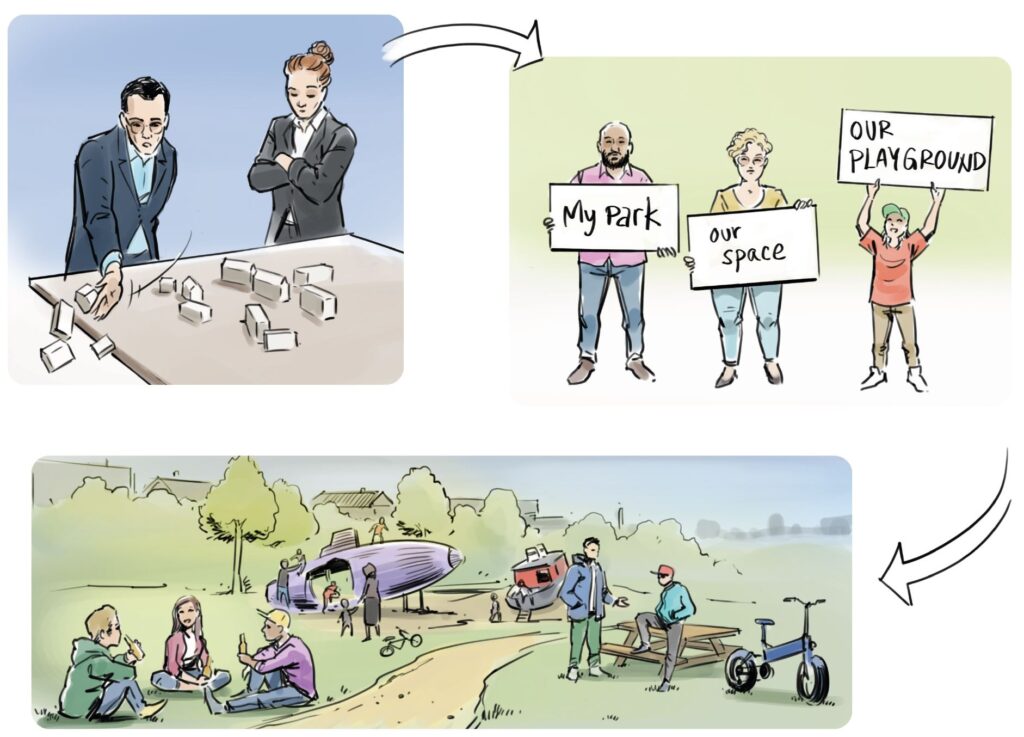Definition of Placemaking
A very important dimension of the concept place to social work in the city is placemaking. In this module we draw on geographers, who perceive place in a critical perspective drawing on Marxism, feminism, and poststructuralism, thus understanding places as socially constructed and embedded with negotiations and acts of inclusion and exclusion (Cresswell, 2015). As pointed out in Urban SOS framework for value-based social work in an urban environment (2022)(see the first theme), the idea of the ‘right to the city’, introduced by Henri Lefebvre, highlights issues such as struggles and tensions over resources in urban environments, and discussions of inequality from a right-based perspective. These are of central interest and relevance to social work and mirrors core values such as social justice and equality. As cited in the Urban SOS framework, geographer David Harvey states that:
“The question of what kind of city we want cannot be divorced from that of what kind of social ties, relationship to nature, lifestyles, technologies, and aesthetic values we desire. The right to the city is far more than the individual liberty to access urban resources: it is a right to change ourselves by changing the city. It is, moreover, a common rather than an individual right since this transformation inevitably depends upon the exercise of a collective power to reshape the processes of urbanization. The freedom to make and remake our cities and ourselves is, I want to argue, one of the most precious yet most neglected of our human rights.” .
(2008: 23)
This right-based perspective both highlights important elements to the concept of placemaking, namely social relations, values, and power relations as well as illuminates the struggles and tensions over resources in urban environments. These are very important aspects to pay attention to when working for social justice and equity in the city.

On an individual level the concept of place as introduced here can bring knowledge and qualify analysis of the context of the service users and their interconnectedness to places and people. It gives the social worker insight to emotional and social processes of importance to the service user, which are paramount in the planning and organizing of service.
On a structural level the concept of place and the perspective of ‘the right to the city’ can provide valuable insights to analysis on processes of gentrification, displacement of populations/groups, city planning, national and local legislation etc. This knowledge can qualify decisions and provide perspectives on actions on a more organizational level, e.g., where are decisions on city planning made? How can we gain influence? How can we plan social work to support collective processes to diminish social injustice, discrimination? etc.